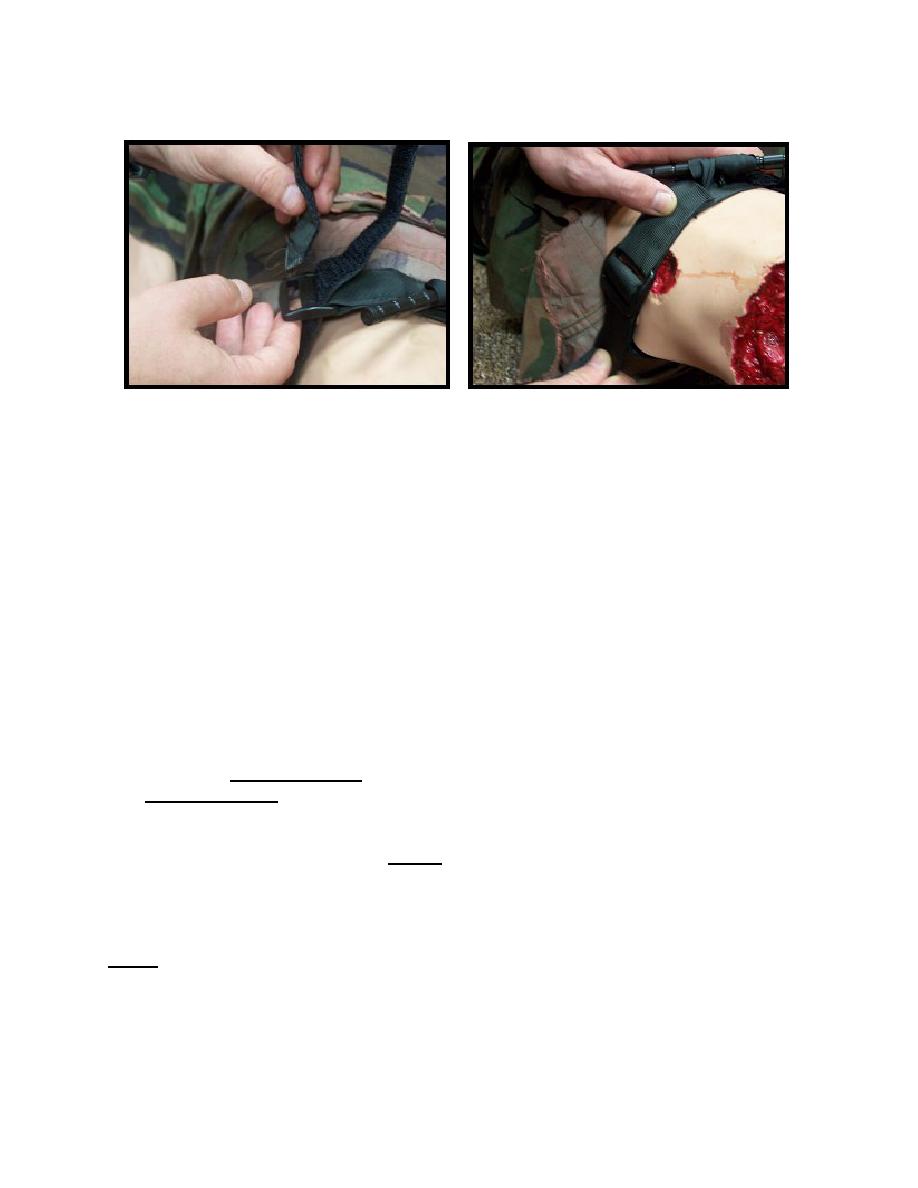
A
B
B. CAT applied to a complete amputation.
A. Wrapping the Self-Adhering Band
Band through the friction adaptor
buckle to prevent the Self-Adhering
Band from loosening during transport.
Figure 5-17. Applying the Combat Application Tourniquet to the thigh.
(large extremity application).
5-10. APPLYING AN IMPROVISED TOURNIQUET
In the absence of a specially designed tourniquet, such as the CAT, a tourniquet
may be made from a strong, pliable material such as gauze or muslin bandages and
clothing. An improvised tourniquet is used with a rigid stick-like object. To minimize
skin damage, ensure that the improvised tourniquet is at least two inches wide.
a. Gather Materials for Making a Tourniquet.
(1) Tourniquet band. You need a band of strong, pliable material that is at
least two inches wide when folded and will retain this width after being tightened. A
folded muslin bandage (usually called a cravat), a folded handkerchief, or a folded strip
of clothing will do. A belt, rope, strap from LBE (load bearing equipment), roller gauze,
or a torn sleeve can also be used. Do not use wire or shoestrings as a tourniquet band.
A wide tourniquet will protect the tissue beneath the tourniquet when it is tightened. If a
very narrow tourniquet is used, the nerves and blood vessels beneath the tourniquet
may be seriously damaged.
NOTE:
Figure 5-18 illustrates how to fold material into a cravat. The square
material is cut in half along the diagonal (base) to form two triangular
bandages. Each triangular bandage can be made into a cravat.
IS0871
5-18



 Previous Page
Previous Page
